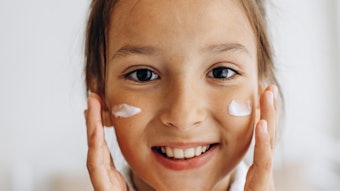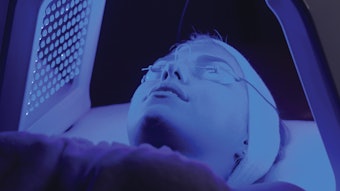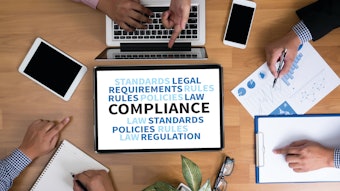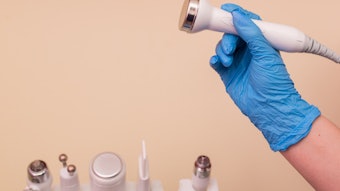The Indoor Tanning Association (ITA), which represents thousands of tanning salon owners across the United States, recently ran a full-page ad in The New York Times aiming to “dispel the myth that moderate exposure to ultra-violet radiation is deadly.” The reason? “Our membership is fed up with being constantly demonized and maligned by the sunscreen industry and dermatologists,” says Sarah Longwell, the organization’s director of communications.
Whether this demonization is fair is a matter of ongoing debate between indoor tanning advocates, primarily those who own and run tanning salons, and dermatologists, most of whom advocate shunning all forms of UV light. And while each side has been accused of twisting the truth to their own benefit, some statistics may speak for themselves:
* Indoor tanning is a big business that generates about $5 billion annually in the United States.
* About 1 million people—70% of them Caucasian women aged 16 to 49—frequent a tanning salon per day.
* Incidence of skin cancer is rising faster than that of any other type of cancer, according to a study published in the Journal of the American Medical Association.
* Each year, there are an estimated 1 million new cases of non-melanoma skin cancer and 60,000 cases of malignant melanoma.
Here, both sides weigh in on some of the most hotly contested issues in the tanning debate.
The base tan controversy
It is the position of the ITA that regular, moderate use of tanning beds is a good thing—especially if that “base tan” prevents you from burning. “Going in every day for a week—for very short periods of time—before going on vacation is going to protect your body from that shock of going into the sun for the first time after a winter of no exposure,” says Longwell.
While dermatologists agree that burning is bad—numerous studies have linked incidence of bad sunburns with increased skin cancer risk—few agree with premise that the solution is to get more UV exposure. “A base tan is giving you a false sense of security that you won’t burn, but in fact, a base tan provides only about the sunscreen equivalent of SPF 3,” says Joel Cohen, a clinical assistant professor of dermatology at University of Colorado. “So not only is it providing very little protection, maintaining that tan requires exposing yourself to more and more UV radiation.” The better solution: Cohen urges people not only to wear sunscreen, but also not to spend their vacation days simply baking on the beach.
Getting your vitamin D
Studies linking vitamin D with decreased rates of bones fractures, diabetes, multiple sclerosis, high blood pressure and various types of cancer have further complicated the controversy over whether tanning is good or bad for you. And there is plenty of compelling evidence that getting more vitamin D is a positive thing. An article published this year in Proceedings of the National Academy of Sciences examined the issue and concluded that although “a significant fraction of cutaneous malignant melanomas is related to sun exposure.” and “There may be more beneficial than adverse effects of moderately increased sun exposure.”
Other studies, however, have concluded that dietary sources—in addition to the several minutes of incidental sun exposure most people get daily—are the better way to maintain adequate vitamin D levels. “Daily intake of two glasses of fortified milk or orange juice or one standard vitamin supplement is enough to generate normal vitamin D levels,” Cohen says. “I would recommend getting your vitamin D from your diet and your tan from a bottle.”
Indoor vs. outdoor sun
According to Longwell, one of the ITA’s goals is “to make sure people aren’t scared off or misled by bad information.” Among that “bad information,” she cites an oft-quoted statistic that tanning beds are up to 15 times stronger than the sun’s rays. She says that that statistic was gleaned from one study of one bed, and that it is not indicative of most currently used beds. “They are stronger than the sun—about twice as strong—and that’s why you can get color in a shorter amount of time than you would outside,” she says.
But according to a study published last year in the International Journal of Cancer, the doses of UV radiation from sunbeds may be as much as five times stronger than natural sunlight—which would mean that 20 minutes in a tanning bed delivers UV radiation equivalent to two to three hours in the midday sun.
What the government thinks
Tanning beds fall under the jurisdiction of the U.S. Food and Drug Administration and the Federal Trade Commission—agencies that set requirements for equipment performance standards and safety considerations such as protective eyewear. But in the past few years there have been attempts to do more to mandate the use of tanning beds. Twenty-five states currently have restrictions on teens’ use of tanning beds, mostly requiring a parent to write a note of consent or to accompany anyone under 18. The World Health Organization has proposed a complete ban on indoor tanning for anyone under age 18.
And last fall, the U.S. House and the Senate passed the Tanning Accountability and Notification Act. The TAN Act requires the FDA to re-examine the warning labels on tanning beds to ensure that it communicates the possible risks.
Can you get “addicted” to tanning?
“Researchers have looked at tanning behavior and seen a link with other addicting-type behaviors,” says Cohen. “There is an endorphin rush associated with UV exposure. Plus, I think there’s a sense of wanting to feel like you’re getting your money’s worth.” According to a study published in the Journal of the American Academy of Dermatology, all tanning salons offer unlimited tanning packages, and 95% of them allow customers with unlimited plans to tan as frequently as they want.
Despite the prevalence of unlimited tanning packages, Longwell contends that her organization is committed to spreading a message of moderation. “We want to tell people, ‘Do this in moderation and you’ll be fine; just don’t do it too much,’” she says. “When you see stories of people who are ‘addicted’ to tanning, it’s always someone who’s engaging in behavior that’s completely over the top.”
What it means to be a carcinogen
In 2005, the National Institute of Health labeled exposure to sun beds as a known carcinogen. And in this year’s annual Report on Carcinogens from the agency it states: “Exposure to sunlamps or sunbeds is known to be a human carcinogen, based on sufficient evidence of carcinogenicity from studies in humans, which indicate a causal relationship between exposure to sunlamps and sunbeds and human cancer.”
It goes on to say that epidemiological studies have shown a correlation between exposure to sunbeds and an increased risk of melanoma and that “the longer the exposure, the greater the risk, especially in people exposed before the age of 30.”
The ITA responds by providing the complete list of substances which the NIH has rated as carcinogens, in an effort to show that many common substances--such as coal tar, which is found in some dandruff shampoos--also make the list.
Does tanning cause cancer?
“It’s burning that really contributes to skin cancer, which is why we think that tanning beds are safer than the sun,” says Longwell. “You can get moderate exposure in a controlled environment.” It’s true that burns are associated with increased risk of melanoma. In fact, a single severe sunburn in childhood can double your risk of developing melanoma as an adult.
But others maintain that you don’t necessarily have to burn to do damage. By its very definition, a tan is damage to the skin. The UV light is absorbed by the DNA, and part of the body’s response to that damage is to stimulate melanin synthesis--that’s how the skin gets darker). “Even a little is bad,” says Cohen, “and chronic, unprotected exposure—such as you’d get by regularly going to a tanning salon—not only results in premature skin aging, but it also increases the risk of skin cancer.”
By Sally Wadyka for MSN Health & Fitness, May 23, 2008









